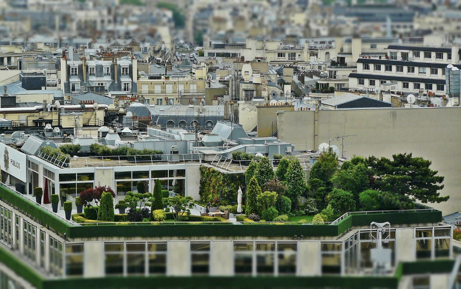
Green architecture is the careful designing of a resource-efficient structure that is environmentally accountable. It maximizes its life performance independently while preventing pollution of the environment.
Buildings are constructed using green technologies that ensure you live in a clean, peaceful and serene environment. Here are some of the fundamental principles that make up a green structure:
Minimizes energy consumption and ensures water efficiency
Rooftop gardening to save energy is an efficient method adopted by some of the best buildings worldwide. Rooftop gardens reduce heat flow hence reducing the average daily demand. This is by reducing solar radiation concentrated on materials used to build the structure.
The use of self-learning radiator thermostats that use two integrated temperature sensors to gauge the room temperature is another solution. This enables it to control hot water flow to fit the room’s temperature.
Some buildings use Currant, which is a device that lets you know how much energy your appliances are consuming. It uses the Currant application that enables you to manage energy consumption anywhere and suggests ways you can minimize energy consumption and save money.
Reducing indoor portable water and water consumption in an attempt to improve well-being ensures the achievement of water efficiency. Adopting methods such as rainwater harvesting, recycling, and reusing greywater are among the initiatives taken by such buildings. This reduces energy consumption and sewage volumes making the world a better place.
Uses recycled and renewable resources
After using an item, it’s better to find out if it can be recycled to ensure it doesn’t end up in the wrong hands. Materials such as all plastic bottles and marked containers with no lids can be used again for different purposes. Batteries, especially those made from lead and mobile phones, are 98% recyclable.
Garden waste, food peels and other organic materials can be recycled to produce biogas. This is an efficient method for the production of energy in the form of electrical and thermal power in a building. Recycling scrap metal reduces the ecological impacts of mining raw materials.
The use of renewable energy is a promising step to achieving clean energy in the future. It reduces carbon and other gaseous pollutant emissions to the atmosphere, thus reducing global warming.
Clean energy from the sun, wind, biomass and those integrated to produce hydroelectric, geothermal and tidal energy are key in achieving a green environment. Harnessing these sources of energy to provide power to run buildings is cost-effective and goes a long way to a sustainable future.
Aims at creating a healthy environment
The goal is to create an indoor environment that improves the health of humans. A healthy structure improves indoor air quality and increases the activity levels of building occupants.
The engineering and architecture project expert at professional essay writing service, says that
optimum ventilation removes stale air replacing it with fresh air and reduces the accumulation of. The use of supply and exhaust fans as a mechanical ventilation method alongside natural ventilation methods can achieve this.
The best way to be green is to look green and this is why most architectural designs introduce plants in the structure. Apart from regulating humidity and reducing carbon dioxide emission, plants decrease stress levels and greatly increase the productivity of occupants. They have a positive effect on your mood and this boosts your self-esteem level.
Manages its operations optimally
Proper and responsible maintenance of a building is key in ensuring it lives to see the future a sustainable building isn’t an exception. The use of toxic cleaning products reduces fresh air quality in the building and energy efficiency devices are compromised once sensor control points aren’t tested. By proper training of the facilities managers, occupants of the building and the maintenance staff leads to achieving this.
Selecting easy to maintain systems at the beginning of construction is something that you should do to the maximum of your ability. Establish commissioning criteria at the onset of the project to ensure that the operation and maintenance personnel are part of the project’s planning and development.
They should purchase cleaning products and supplies that are biodegradable, resource-efficient and safe to use. Use automated controls and monitors for energy, water, waste, temperature, moisture and ventilation.
Most of these buildings are technologically powered hence the need for system updates and repairs. When updating, choose higher efficiency equipment and highly durable materials that can withstand natural events. Finally, a strong building maintains its stature when tightened and, if feasible, enveloped.
Sustainability is key to achieving a green environment and this entirely depends on its occupants. Incorporating health and safety, comfort and productivity in the structure with the knowledge on its future outcome will ensure that future generations get to use it.
Conclusion
The goal of a green building is to ensure high-performance levels through taking care of its economic, environmental and social impacts. They ensure cost-effectiveness and a healthier environment. The world is heading to a greener error and architectural designs of buildings shouldn’t be left out on this.
Justin Osborne is a writer at uk.bestessays.com, he loves to share his thoughts and opinions about education, writing and blogging with other people on different blogs and forums. Currently, he is working as a content marketer at professional essay writing service.
